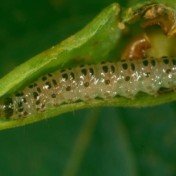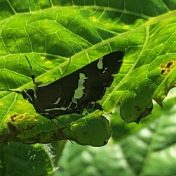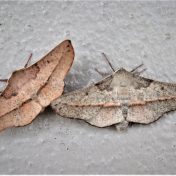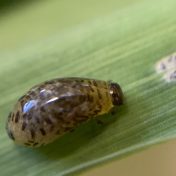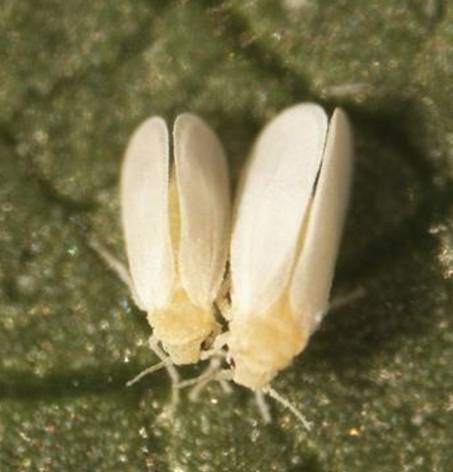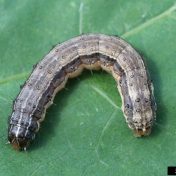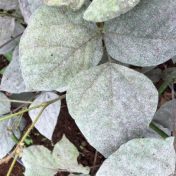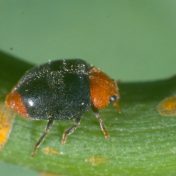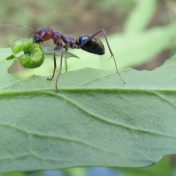Observations from recent Pulse Check field days in CQ Bean podborer (Maruca vitrata) and beet webworm (Spoladea recurvalis) are on the move in Central Queensland (CQ) mungbean crops. While both species may also be active in other mungbean regions, bean podborer is most likely to occur in coastal (e.g. the Burdekin) and subcoastal (Biloela, Kingaroy) regions. Bean podborer is a… Read more »
Beet webworm (Spoladea recurvalis) moths are being seen in huge numbers in mungbean crops at present. The moths are brown with white bands across the wings, and rest with their wings swept back. Those familiar with bean podborer (Maruca vitrata) will see the similarities between the two moths – both small brown moths that move readily when disturbed. At rest,… Read more »
A plague of a native geometrid moths (Antictenia punctunculus – no common name) has visited southern Queensland, with huge numbers of moths reported. The species belongs to the twig looper family (Family Geometridae) and occurs in Queensland, New South Wales and the ACT. The moths have a 35-40 mm wingspan and distinctive colour pattern. The adults are a greyish brown… Read more »
Over the past week, the Queensland Department of Agriculture and Fisheries (DAF) has received a number of enquiries about leaf damage in millet crops. The culprit is a native beetle (Oulema spp.), a member of the chrysomelid (leaf beetles) family. The larvae of the beetle are doing the leaf feeding. They are small, slimy-looking grubs with a hunched appearance. Fun… Read more »
The first major outbreak of silverleaf whitefly (SLW) in Australia occurred in 2001-02 in central Queensland. Although it hasn’t occurred again in such biblical proportions, SLW has spread across Australia and is still a pest to watch in many cotton crops, as the honeydew it secretes contaminates the lint. The original SLW threshold matrix developed in central Queensland recommended looking… Read more »
Fall armyworm (FAW, Spodoptera frugiperda) is an exotic pest that was detected in northern Queensland in a maize crop in February 2020. State and federal biosecurity organisations have determined it to be unfeasible to eradicate this pest and it is now classified as an endemic pest. Originating from tropical and sub-tropical areas of the Americas, FAW was reported in Africa… Read more »
Recent rainfall has led to opportunistic late plantings in some areas. The current high relative humidity may also lead to an increased risk of disease in some crops. Department of Agriculture and Fisheries (DAF) plant pathologists are encouraging Northern Region grain growers to submit disease samples (particularly powdery mildew in mungbeans) for diagnosis as part of effective paddock monitoring and… Read more »
Cryptolaemus montrouzieri is a ladybird beetle native to Australia that feeds predominately on mealybug and soft scale insects. Identified as an effective biological control agent, it has been exported to many other regions, and is reared commercially for control of a range of mealybug species, particularly in horticultural crops. In cotton crops where solenopsis mealybug (Phenacoccus solenopsis) is present, Cryptolaemus… Read more »
While ants are most often thought of as a nuisance in kitchens or at picnics, they can also be present in a wide range of crops and other farm areas. Although ant nests are usually built in undisturbed locations (in field crops ants are most commonly found on field margins), in some soils they can colonise cultivated areas quite quickly…. Read more »
The Beatsheet would like to wish all our readers and subscribers a very merry chrysalis for 2019! For those taking a break we hope you have a safe and happy holiday. The Beatsheet is brought to you with the support of DAF, GRDC and CRDC. If you have any comments or suggestions regarding this pest management information service, please let… Read more »
